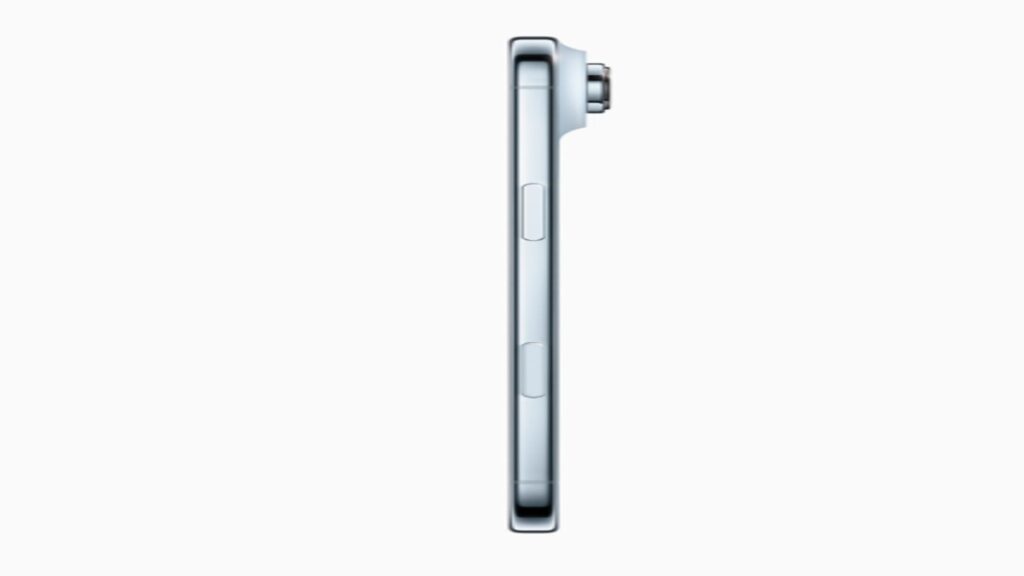iPhone 17 Air: Apple’s Thinnest Gamble Yet — Elegance, Ego, or Evolution?
In a world where smartphones are no longer just gadgets but status symbols, Apple has once again redefined the conversation—not with more, but with less. The iPhone 17 Air, launched this September, isn’t just the thinnest iPhone ever made. It’s a philosophical statement. A rebellion against bulk. A whisper in a market that screams specs. But beneath its sleek titanium skin lies a deeper question: Is minimalism the future of mobile technology, or is Apple simply packaging restraint as innovation?
The Design: Slim Enough to Be a Statement
At just 5.5mm, the iPhone 17 Air is thinner than most credit cards and lighter than many smartwatches. It’s not just a phone—it’s a fashion accessory, a design marvel, and perhaps, a subtle jab at the Android world’s obsession with megapixels and battery bricks.
Apple’s choice of materials—brushed titanium edges, matte glass back, and a seamless OLED front—makes the device feel more like a sculpture than a smartphone. Available in Sky Blue, Cloud White, Light Gold, and Space Black, the Air doesn’t shout for attention. It earns it. But this design comes at a cost. The battery is smaller. The camera count is reduced. And the device feels almost too delicate—like a luxury item that demands careful handling. Is this the future we asked for, or the one Apple decided we deserve?
Performance: Power in a Featherweight Frame
Don’t let the slim profile fool you. Inside the Air beats the heart of Apple’s latest A19 Pro chip, a silicon beast that balances performance with efficiency. Whether you’re editing 4K video, running AI-powered apps, or simply doomscrolling through social media, the Air handles it all with grace.
The device comes in 256GB, 512GB, and 1TB storage variants, each paired with 8GB RAM. It’s not just fast—it’s fluid. The animations glide. The apps snap open. The transitions feel like silk. But here’s the twist: Apple hasn’t added any new performance features. No revolutionary cooling system. No gaming mode. No overclocked cores. Instead, it’s refined what already worked and wrapped it in a thinner shell. Evolution, not revolution.
Camera: One Lens, Infinite Debate
Perhaps the most controversial choice in the iPhone 17 Air is its single 48MP rear camera. No ultrawide. No telephoto. Just one lens, backed by Apple’s software magic. For casual users, this might be enough. The camera captures stunning detail, handles low light decently, and supports cinematic video modes. But for creators, influencers, and photography purists, the lack of versatility is glaring. Apple argues that software can replace hardware. That AI can simulate depth, widen angles, and sharpen zoom. But is that enough? Or is this a calculated compromise to maintain the Air’s slim profile?
The debate is already raging online. Some hail it as a bold move. Others call it a downgrade. But one thing’s clear: Apple isn’t afraid to challenge norms—even if it means losing a few specs on the way.
Intelligence, Privacy, and the New AI Layer
The iPhone 17 Air isn’t just smart—it’s contextually aware. With Apple Intelligence deeply integrated, the device now understands your habits, anticipates your needs, and protects your privacy like never before. Siri has evolved. It no longer just answers questions—it offers suggestions, drafts emails, and even rewrites messages based on tone. The Air can summarize articles, transcribe voice notes, and organize your day—all without sending data to the cloud. This privacy-first AI approach is Apple’s answer to the growing concerns around surveillance capitalism. While other platforms monetize your behavior, Apple promises to protect it. But again, the question arises: Is this genuine concern or strategic branding?
Battery Life: The Thin Trade-Off
With great slimness comes great sacrifice. The iPhone 17 Air’s battery, rumored to be around 2800–3100mAh, is smaller than its siblings. Apple claims it lasts a full day—but that depends on how you use it. Heavy users—gamers, streamers, multitaskers—might find themselves reaching for the charger by evening. Light users, on the other hand, will enjoy the balance of elegance and endurance. Fast charging is supported, but no major leap has been made. iPhone 17 Air No solar charging. No graphene cells. Just the same Lightning-fast experience Apple has refined over the years.
Pricing: Luxury Has a Number
The iPhone 17 Air isn’t cheap. Starting at ₹1,19,900 for the 256GB variant and going up to ₹1,59,900 for the 1TB model, it’s priced like a flagship—even if it lacks some flagship features. Apple knows its audience. The Air isn’t for everyone. It’s for the minimalist, the aesthete, the loyalist. It’s for those who believe less is more—and are willing to pay more for less. EMI options, trade-in offers, and AppleCare+ bundles make it slightly more accessible. But make no mistake: this is a premium product, designed to sit in the hands of the few.
What’s Missing—and Why That Matters
iPhone 17 Air No ultrawide camera. No fingerprint sensor. No headphone jack. No expandable storage. No radical new features.And yet, the Air feels complete. Because Apple isn’t selling specs. It’s selling experience. The joy of holding something impossibly thin. The pride of owning something unapologetically different. But for tech enthusiasts, the omissions are hard to ignore. In a market flooded with innovation, Apple’s restraint feels both refreshing and frustrating.
Cultural Impact: More Than Just a Phone
The iPhone 17 Air isn’t just a device—it’s a cultural artifact. It reflects a shift in consumer behavior. A desire for simplicity. A rejection of excess. In India, where smartphones are often judged by camera count and battery size, the Air challenges the norm. It invites users to rethink what matters. To choose elegance over endurance. To prioritize design over utility. It’s a risky move. But Apple has never played safe. And in doing so, it has once again sparked a conversation that goes beyond tech.

